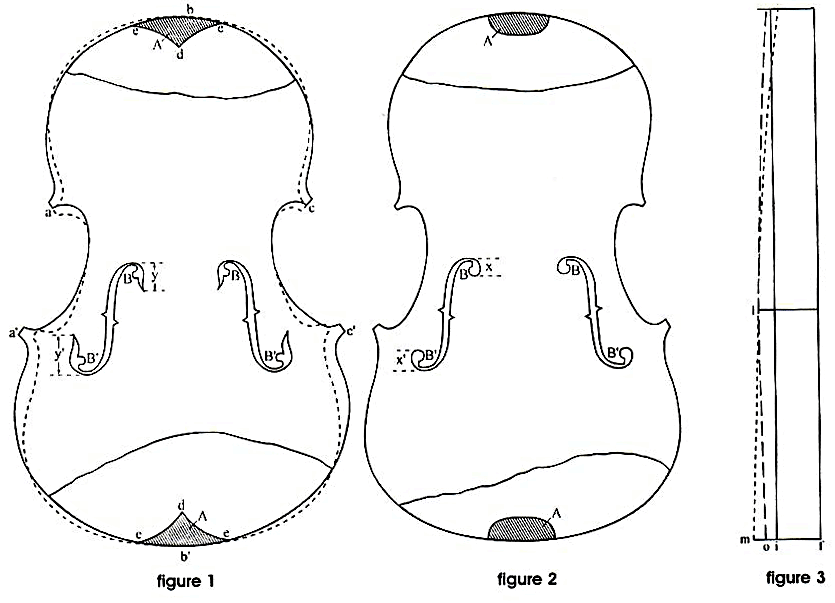James Christensen

The three figures, slightly redrawn, presented in Stelzner's patent
FIGURE 1. The proposed outline of the bouts, shown by the curves abc and a'b'c'. The dotted line represents the outline of conventional instruments consisting of connected circles (arcs), while the solid lines show the proposed outline based on ellipses. The two main blocks, labelled A, are configured so that their surfaces, de, form curves, parabolas, 'whose foci, axes and diameters are so related to the ellipses, abc and a'b'c', that at every point there is an amplification of the sound waves'
FIGURE 2. The standard nondescript ovoid shape for the blocks. The body tine and f-holes are also conventional
FIGURE 3. The proposed configuration of the ribs, where the rectangle fghi approximates the conventional design in which the ribs are only infinitesimally higher at the lower end of the instrument than at the upper. The proposal is for the upper edge of the rib, defining the surface to be covered by the belly, to form a parabola, either simple, as in the curve klm, or compound, as in the curve nlo. The latter curve, producing ribs that are highest at about the level of the bridge, was selected for the violottas that I have seen, whereas the former, in which the rib is highest at the bottom or base of the body, was used in the cellos that I know about, The shape of the f-holes is altered so that the lengths x and x' (see figure 2) are replaced by the greater lengths y and y' (see figure 1) to increase the mass of the two vibrating tongues of wood B and B'
Back to article on Stelzner's Instruments - Read Stelzner's US Patent
[Draeseke Home Page]
[About IDG] [Biography]
[Discography] [Compositions] [Alfred Stelzner Home Page]
[AK/Coburg recordings] [Chamber Music] [Orchestral
Music] [Keyboard Music] [Top]
© All contents copyright by the International Draeseke Society/NA